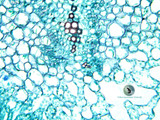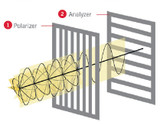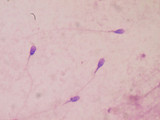Plant Stomata under the Microscope
Sep 11th 2018
On the outer layer of the leaf of a plant are microscopic holes called stomata. Stomata control gas exchange and water loss by opening and closing. Stomata are of particular interest to plant breeders because plants with smaller or fewer stomata tend to have lower levels of evaporation and can survive drought better than those plants with more stomata. Additionally, researchers often study stomata
…
How to Avoid Microscope Repairs
Sep 9th 2018
Avoiding microscope repairs sometimes just involves a small bit of knowledge about your microscope. Here are a few pointers to hopefully help you avoid microscope repairs.
Read the microscope instruction manual. Most people never read this and although it might seem boring and tedious, there is often good information in the microscope manual that can save you time and headache down the road.
Do n
…
Microscopy Polarization Explained
Aug 21st 2018
Polarized Light Microscopy
Polarization contrast is a contrast method to detect birefringence, which is a material characteristic that can be found in minerals, polymers, crystals, pharmaceutical samples, biomedical samples and even botanical samples. Birefringence is the optical property of a material having a refractive index that depends on the polarization and propagation direction of light.
I
…
Andrology Semen Analysis Microscopes
Aug 6th 2018
Andrologists use a semen analysis microscope to view both the quality and the quantity of sperm to help determine male fertility. Semen samples must be kept warm with a heating stage in order to keep the semen living during sperm analysis. When viewing living samples, phase contrast microscopy is used to avoid harming the sample. Other samples are often stained in order to better view the sample.
…







